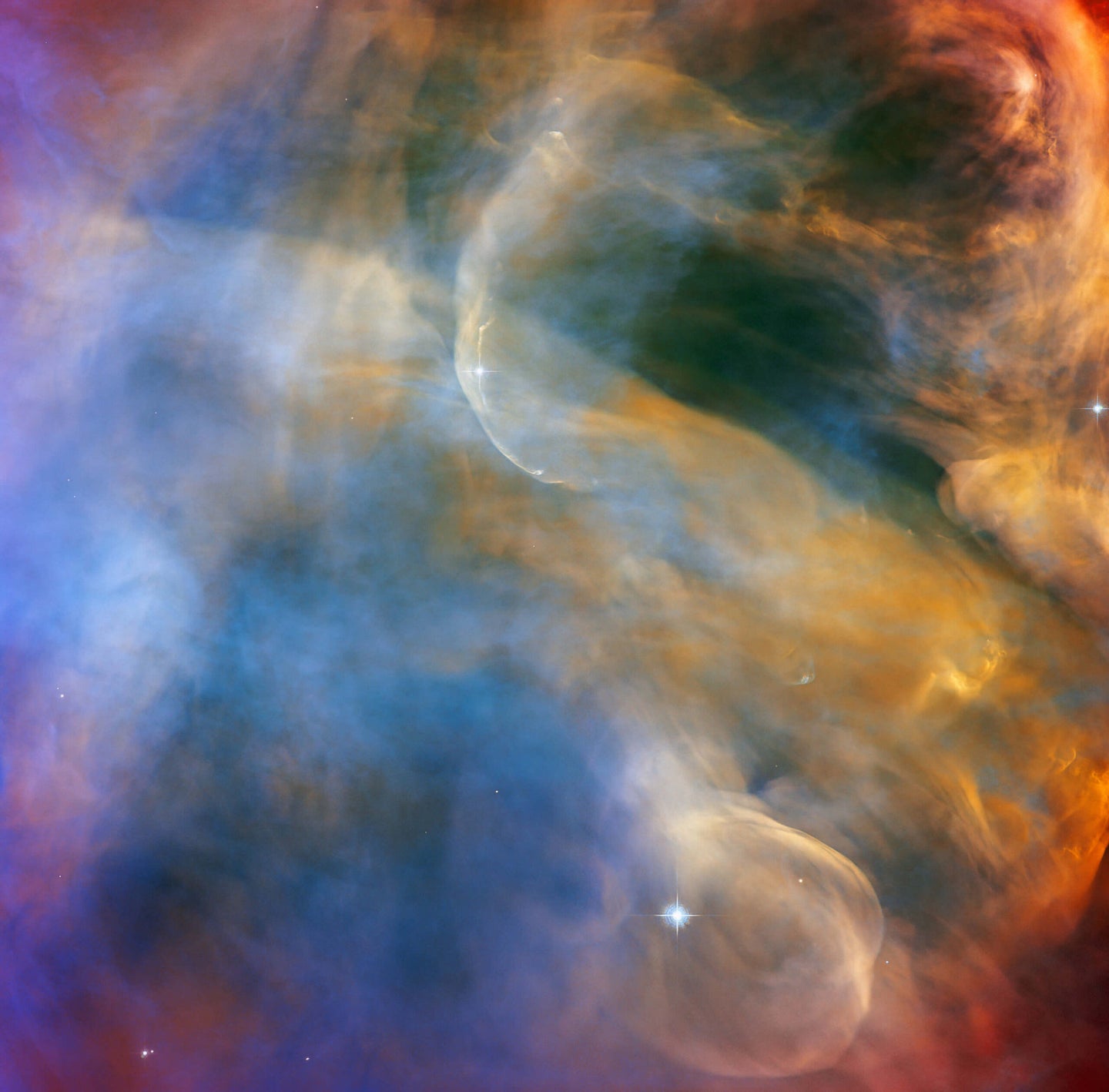
With all the hubbub surrounding the James Webb Space Telescope (JWST) it’s easy to forget about NASA’s other eye in the sky, Hubble, which is still capable of producing stunning observations. If you need proof, NASA just released an image of a dazzling celestial waltz featuring an Orion Nebula cloudscape, snapped by none other than ol’ reliable.
Related: Hubble photographs the most distant star ever found
What the image of the Orion Nebula cloudscape shows
Examining the image, one can observe the Herbig-Haro object HH 505 ensconced in the Orion Nebula. According to NASA, Herbig-Haro objects “are luminous regions surrounding newborn stars that form when stellar winds or jets of gas spew from these infant stars creating shockwaves that collide with nearby gas and dust at high speeds.”
Responsible for HH 505 is a star called IX Orion, which is 1,000 light years away from Earth. One can see it glowing at the bottom of the image on the perimeter of the Orion Nebula cloudscape.
Additionally, shockwaves are also visible. They are caused by outflows and currents of slower-moving stellar matter. There is also an abundance of ultraviolet radiation due to bright, young stars—and Hubble is particularly well-equipped to observe it.
“Hubble’s sensitivity to ultraviolet light allows astronomers to directly observe these high-energy outflows and learn more about their structures,” NASA writes.
Related: How scientists colorize Hubble’s deep space photographs
About the Orion Nebula
This image of the Orion Nebula cloudscape is one of 520 that create a composite mosaic image of the entire nebula. It is currently the sharpest image of the region to date.
According to NASA, the Orion Nebula is a region of gas and dust where thousands of stars are presently forming. The area is Earth’s closest region of massive star formation, and as a result, Hubble often studies it.
The post Hubble’s latest: colorful cloudscapes of the Orion Nebula appeared first on Popular Photography.